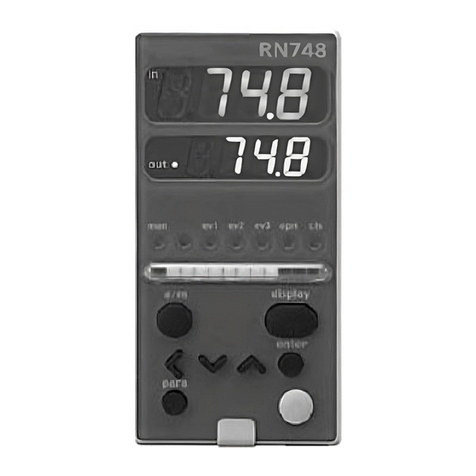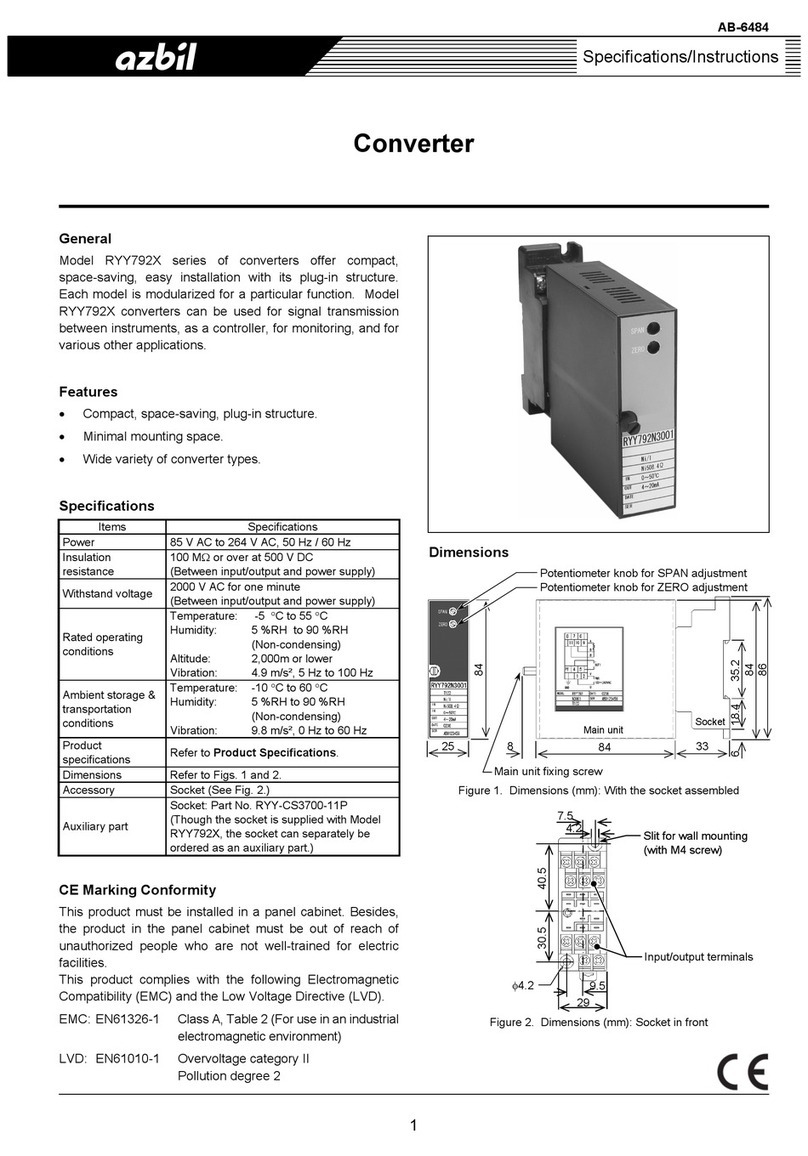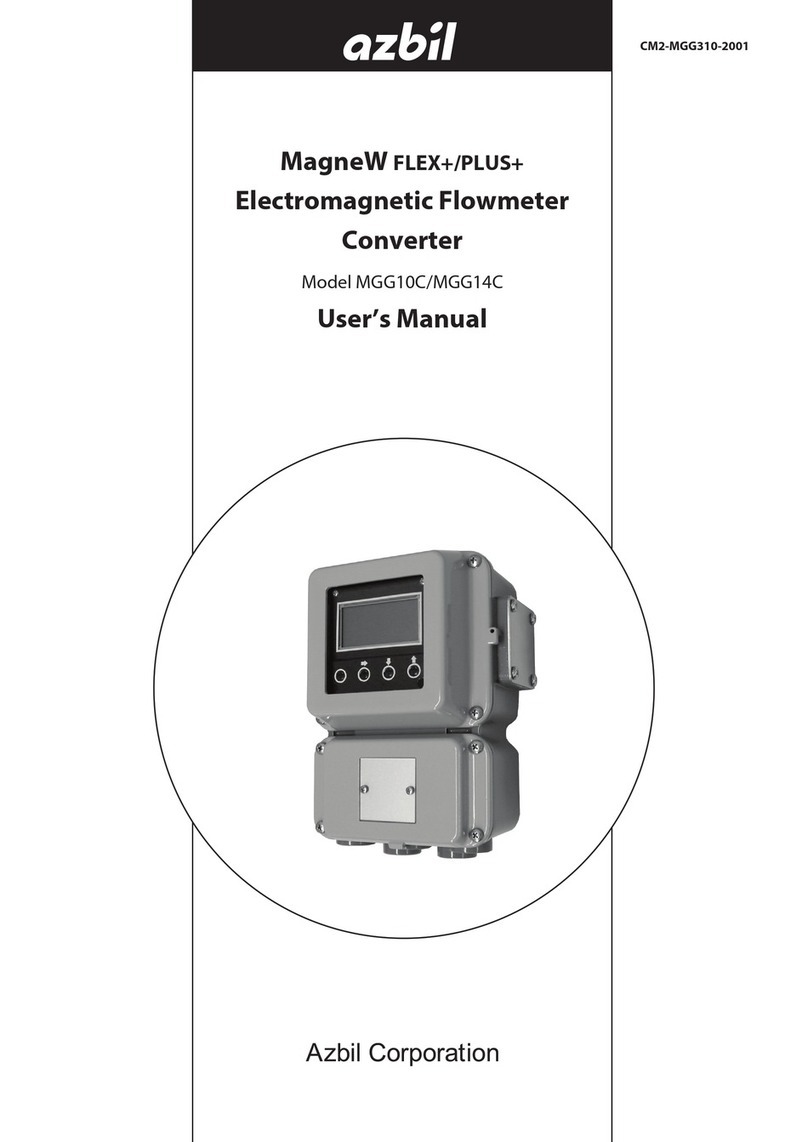
AB-6484
2
Installation
Model RYY792X converters are mounted on panels. Install according to the following instructions:
Precautions for installation
Do not use the product in an atmosphere containing excessive humidity, acidic gases, or corrosive substances.
Use the product under the conditions specified in this document.
Use dedicated sockets.
Installation procedure
1) Mount the socket on the panel with DIN rail or screws. For screw-mounting, mounting screws (M4 15 or longer) are
additionally required. Mounting dimensions are shown in Figs. 1 and 2.
Before mounting the socket, make sure that it is in upright position. (Do not mount it upside down.)
2) Connect the wires to the terminals according to Wires Connection section.
Then, assemble the main unit with the socket by carefully inserting the main unit in the front of the socket. Improper
insertion (e.g., with the main unit inclined/upside down) can damage the pins of the main unit or the socket.
After insertion, finger-tighten the main unit fixing screw.
Safety Precautions
Please read instructions carefully and use the product as specified in this manual. Be sure to keep this manual nearby for quick
reference.
Restrictions on Use
This product was developed, designed, and manufactured for general air conditioning use.
Do not use the product in a situation where human life may be at risk or for nuclear applications in radiation controlled areas. If
you wish to use the product in a radiation controlled area, please contact Azbil Corporation.
Particularly when the product is used in the following applications where safety is required, implementation of fail-safe design,
redundant design, regular maintenance, etc., should be considered in order to use the product safely and reliably.
• Safety devices for protecting the human body
• Start/stop control devices for transportation machines
• Aeronautical/aerospace machines
For system design, application design, instructions for use, or product applications, please contact Azbil Corporation.
Azbil Corporation bears no responsibility for any result, or lack of result, deriving from the customer's use of the product.
Recommended Design Life
It is recommended that this product be used within the recommended design life.
The recommended design life is the period during which you can use the product safely and reliably based on the design
specifications.
If the product is used beyond this period, its failure ratio may increase due to time-related deterioration of parts, etc.
The recommended design life during which the product can operate reliably with the lowest failure ratio and least deterioration
over time is estimated scientifically based on acceleration tests, endurance tests, etc., taking into consideration the operating
environment, conditions, and frequency of use as basic parameters.
The recommended design life of this product is shown in the following table.
The recommended design life assumes that maintenance, such as replacement of the limited life parts, is carried out
properly.Refer to the section on maintenance in this manual.
Product Recommended design life
RYY792M 9 years
RYY792A, H, L, N,
,
, V, S 13 years
RYY792D, B, Y 14 years






























